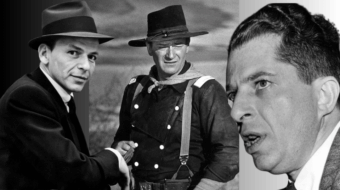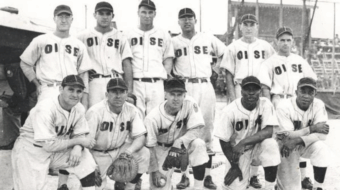
The French Revolution sparked great hopes for the rise of the bourgeoisie, the abolition of feudal structures, and the establishment of capitalist society. Napoleon gained power through military successes against reactionary forces and the restoration of stability after the fall of the Directory. His leading role in state reforms—including the codification of civil rights in the Code Civil, educational and administrative reforms, and the creation of a stable economy—consolidated his absolute power, supported by the military and the bourgeoisie. He centralized power in his person, established an authoritarian regime, and crowned himself emperor in 1804. Napoleon’s wars of conquest in Europe served both territorial expansion and the spread of capitalist production relations. The occupied territories were often restructured and equipped with bourgeois reforms. Through the Continental Blockade and other economic measures, Napoleon sought to secure France’s economic dominance in Europe and weaken competition, especially from Great Britain.
The events of 1806, including the defeats of the Prussian army at Jena and Auerstedt, the dissolution of the Holy Roman Empire, and the occupation of German territories by French troops, led to a strong anti-Napoleonic freedom movement in Germany.
Caspar David Friedrich, born September 5, 1774, was deeply affected by these events, and national themes shaped his art. He depicted specifically German landscapes, such as Rügen, the Harz, Elbe Sandstone Mountains, and the Giant Mountains, interspersed with national symbols like oaks, megalithic tombs, and Gothic ruins. His figures also wore traditional German costumes. It was these national traits, which made sense in the context of the Napoleonic Wars, that were, much later, instrumentalized in a different historical context for the purposes of German fascism. Friedrich’s allegories of death and resurrection often transport a patriotic character. Moreover, his work is imbued with poignant melancholy and solitude, reflecting the mood of the time.
For over forty years, Friedrich, born in Greifswald as the son of a soap boiler, lived and worked in Dresden, the center of early Romanticism, with prominent painters, poets, and composers, including E.T.A. Hoffmann, Heinrich von Kleist, and Carl Maria von Weber, who express violence and horror in their art. Friedrich insisted that his works would and must always bear the imprint of his time. Growing resistance in the occupied territories culminated in the Wars of Liberation (War of the Sixth Coalition) with Napoleon’s defeats in Russia (1812) and at the Battle of Leipzig (1813). The united forces of the restorative European powers, including Britain, Russia, Prussia, and Austria, finally defeated him and restored the old order.
The restoration after the War of the Sixth Coalition, particularly after the Congress of Vienna (1814-1815), had profound effects on the population and freedom of expression in Germany. The restorative forces suppressed any form of liberal or national uprising. Draconian censorship ensured that only government-compliant content was published. Authors who expressed criticism could face publication bans or imprisonment. The authorities employed spies to monitor and persecute political dissidents. Unwanted political associations and assemblies were banned. This repression led to radicalization and strengthened the opposition movements that culminated in the revolutions of 1848. The suppression of liberal and national ideas fostered national consciousness and the desire for a united and liberal Germany.
Friedrich’s work was deeply rooted in the upheavals of his time and must be understood as a reaction to the Restoration after 1815. His support for national freedom movements now turned into an exposure of the reaction in Europe. Winter gained central symbolic power. In art, winter is often a time of death. One of the most famous manifestations is Franz Schubert’s song cycle Winterreise (1827), where winter and ice symbolize political repression. Furthermore, the ninth and final, innermost and most terrible circle of Dante’s Hell is an ice lake, a frozen wasteland. Accompanying the encoded artworks that sought to expose the reaction, the escapism of the Biedermeier esthetic emerged—the retreat, the flight into the private, domestic, and apolitical. The pressure on artists of the time to conform to this was great. But not everyone bowed to it.
Friedrich’s painting Eismeer (The Sea of Ice) (1823-24, oil, Hamburger Kunsthalle), also referred to as The Wreck of Hope) was created during this time of Restoration. The initial impression on this 38×50 in. canvas is dominated by a highly dramatic scene: huge, sharp-edged ice floes rising at pyramidal angles dominate the center of the image, conveying a sense of mortal threat. The horizontal lines of the ice layers and the vertical breaks and peaks of the ice blocks create a dynamic element that heightens the drama of the scene.
Art historians believe the artist may have been inspired to create his images by the expeditionary voyages of discovery to northern polar regions by British explorer Edward William Parry.
The peak of the central ice formation draws the viewer’s eyes to this highest point, increasing the dramatic effect. The ice blocks seem to tilt and break in different directions. The repeating, broken shapes of the ice blocks create a visual rhythm that underscores the chaotic and threatening nature of the scene. Irregular and sharp-edged structures convey a sense of chaos and destruction.
Friedrich’s meticulous attention to detail and the textured representation of the ice enhance the physical presence and harshness of the scene. Different surfaces of the ice blocks, from smooth to rough and jagged edges, are masterfully depicted and contribute to the realistic yet surreal effect of the painting. Light and shadow model the complex surfaces of the ice blocks, creating three-dimensional depth.
The horizontal planes of the ice masses convey stability and suggest an endless expanse of the icy landscape. The low-set horizon line also emphasizes the vastness of the sea of ice and enhances the feeling of isolation and infinity. The sky, dominated by ice blocks, reinforces the sense of oppressive power. The contrast between the calm, horizontal planes and the dynamic, vertical forms creates a visual tension that moves the viewer’s eye back and forth, drawing them into the scene and creating an intense emotional experience.
The absence of people reinforces the feeling of loneliness and abandonment. An all but sunk ship, crushed by the masses of ice, symbolizes failure and destruction. Weathered wood and the ravages of cold intensify the sense of isolation and hopelessness. In art, the ship is frequently a metaphor for the world and human life: Here, surely, all on board must have met a shivering final encasement in a tomb of Arctic permafrost. With its icy demise, all movement freezes, life ends futureless. Bearing Dante in mind, the world is heading for a hell of ice.
The floes in the foreground form a piled-up structure, repeated by similar ice formations in the middle and distant background. These steeply left-leaning slabs resemble deadly high mountain cliffs and suggest further sailing ships frozen into the ice, past victims of the eternal cold. The counter-movement of smaller right-leaning ice peaks enhances the impression of the relentless crushing of all life, supported by the huge, brown horizontal slabs in the foreground. Mentally extending the lines reaching left and right, they converge at the stern of the capsized ship—a dark point amidst the many white shades of the frozen sea.
Viewers observe the scene from the shore—the brown color of the foreground floes and remnants of earth indicate this. However, the earth shows no signs of life, and thin trunks of dead trees, indicating that there once was life here, protrude from the ice. There is no escape from this relentless, all-encompassing ice. Artist and observer each face the icy desert alone.
The perspective of the painting conveys a sense of being overwhelmed by the forces of nature. The combination of textured and detailed elements creates an immersive experience for the viewer. One can feel the cold of the ice, see the hardness and sharpness of the blocks, and almost physically perceive the oppressive nature of the scene. The cold blue of the painting dominates alongside the icy white. The viewer seems to stand on the edge of the icescape, looking at the gigantic, piled-up masses of frozenness. This perspective makes the ice blocks appear even larger and more threatening. Their irregular arrangement leads the eye deep into the painting, enhancing the feeling of infinity and solitude.
In the original painting, a barely visible star can be found in the upper right part, offering a small glimmer of hope amidst the relentless freezing and destruction of the sea of ice.

Modern viewers, who understand the artist’s time and set parallels to their own, well understand his despair and are themselves emotionally moved.
With this work of art, Friedrich aligns himself with a tradition of seascapes. The marine and landscape paintings of Turner, Friedrich’s English contemporary, also contain clear, albeit different, social commentaries. While Turner’s gaze is forward-looking, Friedrich’s seems at first glance to look backward. But through his reflection on a specifically German tradition, he expresses a longing for a united Germany, which could only achieve progress by overcoming aristocratic small-state structures. This includes a return to the revolutionary efforts of those reformers of the 16th century who understood the Reformation not only as a religious but also as a political revolution, aiming for the abolition of princely power.
Thus, in 1823, Friedrich painted Hutten’s Grave, in which he commemorates not only the Renaissance humanist and nationalist Ulrich von Hutten but also other patriots of Friedrich’s own time whose names can be found on the sarcophagus. Friedrich created this work to commemorate the 300th anniversary of Hutten’s death. The Gothic ruin depicted is situated in the German city of Oybin. An interesting fact concerning this work is that with the original sale of this painting in 1826, to Karl August, Duke of Saxony, the proceeds went toward the Greek War of Independence.
After Friedrich’s rapid rise during the Wars of Liberation, where he became known for his works aimed at a liberated German republic, he quickly fell out of favor with the political and cultural scene after 1815. When he turned against the princes, he was ostracized along with others of his views. These rulers fought vehemently against any efforts toward national unity that could have endangered their power in the years following 1815. Instead of giving in to the pressure and turning to anti-democratic or unpolitical Biedermeier themes, Friedrich resisted the Metternich Restoration by continuing to portray shattered hopes.
Friedrich’s critical stance made him so unpopular with the authorities that he did not receive the professorship for landscape painting at the Dresden Academy in 1824 during the new appointment because his influence on the youth was feared. Not only in the academic world but also in public consciousness, the artist was increasingly suppressed and could only survive financially thanks to the support of Russian art connoisseurs. His works, including six significant paintings in the Hermitage, found recognition there.
Friedrich experienced a brief moment of hope during the Dresden uprisings in 1830. But after their defeat, his paintings became even darker. When Friedrich died in Dresden on May 7, 1840, he was poor and largely forgotten until the early 20th century. Friedrich’s rebellion in a time of greatest repression and pressure on artists to join the establishment remains relevant to this day.
We hope you appreciated this article. At People’s World, we believe news and information should be free and accessible to all, but we need your help. Our journalism is free of corporate influence and paywalls because we are totally reader-supported. Only you, our readers and supporters, make this possible. If you enjoy reading People’s World and the stories we bring you, please support our work by donating or becoming a monthly sustainer today. Thank you!










